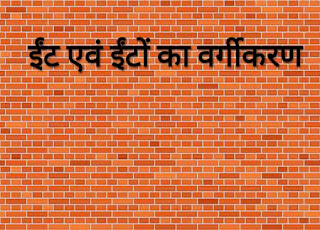COW DUNG IN ARCHITECTURE
Written by - Monu Dalal
Cow and Natural Building :-
"be an architect by sense, promote cowdung as a building material" - Monu Dalal
In India Bhoomi Poojan is a traditional way of respecting Mother Earth and seeking permission to build a home or structure. Here is the belief of Panchagavya (it is the preparation made using 5 ingredients come from cow are milk, cow urine, cow dung, ghee and curd) in Hindu culture where the relation between structure/home with cow begins. The link between desi cows and indigenous homes is much more than the word indigenous. We are blessed with a variety of native cows, each region has its own. For e.g, Thar and Rathi in Rajasthan, Sahiwal in U.P, Kakrej in Gujarat etc. Since the traditional time cow helps in making natural buildings, thus they have a great place in natural buildings. Cow urine addition in mud enhance property of mud and addition to mortar increase its plasticity. Urine mixed mortar is very superior than modern grinding mortar. "The cow is extremely an intelligent animal and has provide us a way to natural construction."
Cow dung :- Cow dung is an natural material for construction provided by cow/ 'GAU MATA'. It has traditional importance in construction works like plastering walls and floors. Mycobacteria, found in cow dung contributes to the anti-depressant properties of cow dung. It is not only a good construction and binder, but its fibres helps in smoothing the surface, fibres also prevent cracks in floor and increase its insulation properties. Cow dung is an antifungal insecticide.
Cow Urine :- Apart from cow dung, cow urine is also used as an plastering and making mortar. It helps to prevent the growth of harmful diseases on floors and walls. It is extremely an good material for earthen floors. Cow urine also helps to prevent cracking in construction. Mixture of 1:10 (cow urine:water) shows an effective fungicide property.
As bamboo is usually used as roofing, abundantly available and an economical solution. As bamboos are treated before use to increase durability. Currently Nepal is working on using of cow urine for bamboo treatment. This shows that cow urine is also one of the crucial ingredients in the natural finish recipe.
Uses :-
1. Cow dung and urine are considered as divine. Even after cleaning of homes in festivals people use or plant cow dung paste on floors and walls to make their home pure.
2. Cow dung is also used for manufacturing bricks, are cheap and eco-friendly. And cow ash is obtained by burning cow dung and drying in sun and used upto 30% in bricks and mortar to bring strength.
3. Cow urine used as a feviquick to remove cracks from floor and walls.
4. To make bricks lighter cow dung is mixed with straw dung, also used to make fibreboard.
5. Cow dung has different minerals and support the growth of microorganisms when it's mixed with soil. It also improve the texture of soil and help to maintain moisture.
6. It is used to coat floors and walls of home as it acts as a cheap thermal insulator. That helps in remaining home cool in summer and warm in winter.
7. Cow dung use used to make bricks to regulate indoor climate.
8. The use of cow products in building materials has been scientifically reasoned and validated by research studies.
Data and studies :-
As concrete is the most consumed resource on the planet, after water. And cement has shaped our built environment (our houses, dams, roads, buildings etc.). Cement industry is one of the primary produces of the green house gase CO2, its carbon footprints are harmful and it also damages the topsoil. Its harmful effects leads soil erosion, flooding and water pollution. Hence, modern construction helps in polluting the environment and destroying natural techniques.
Because construction and buildings causes 39% CO2 emission (data c. UN 2017).
Now, let's look at the traditional construction techniques and significance of cows for sustainable construction. Hindus traditional methods are aligned with cow and nature without harming environment. Construction materials are earth based in traditional India i.e. cost effective, eco friendly and durable. The cost of earth based houses are 40% lower compared to conventional houses.
Earth based building materials for Eco-Construction are- Cob and Adobe.
Cob - it is oldest and simplest building technique, has an amalgamation of soil,clay, cow dung and straw. Proportion depends on type of soil. It helps in maintaining the interior climate of house.
Adobe - it is another earth based construction technique, made from sand, clay and water together with cow dung and straw etc. Which are shaped into bricks using frames and sun dried.
Thus lets join hands together to save our mother earth and mother cow by constructing natural buildings and adopting traditional techniques.







Thank you
ReplyDelete